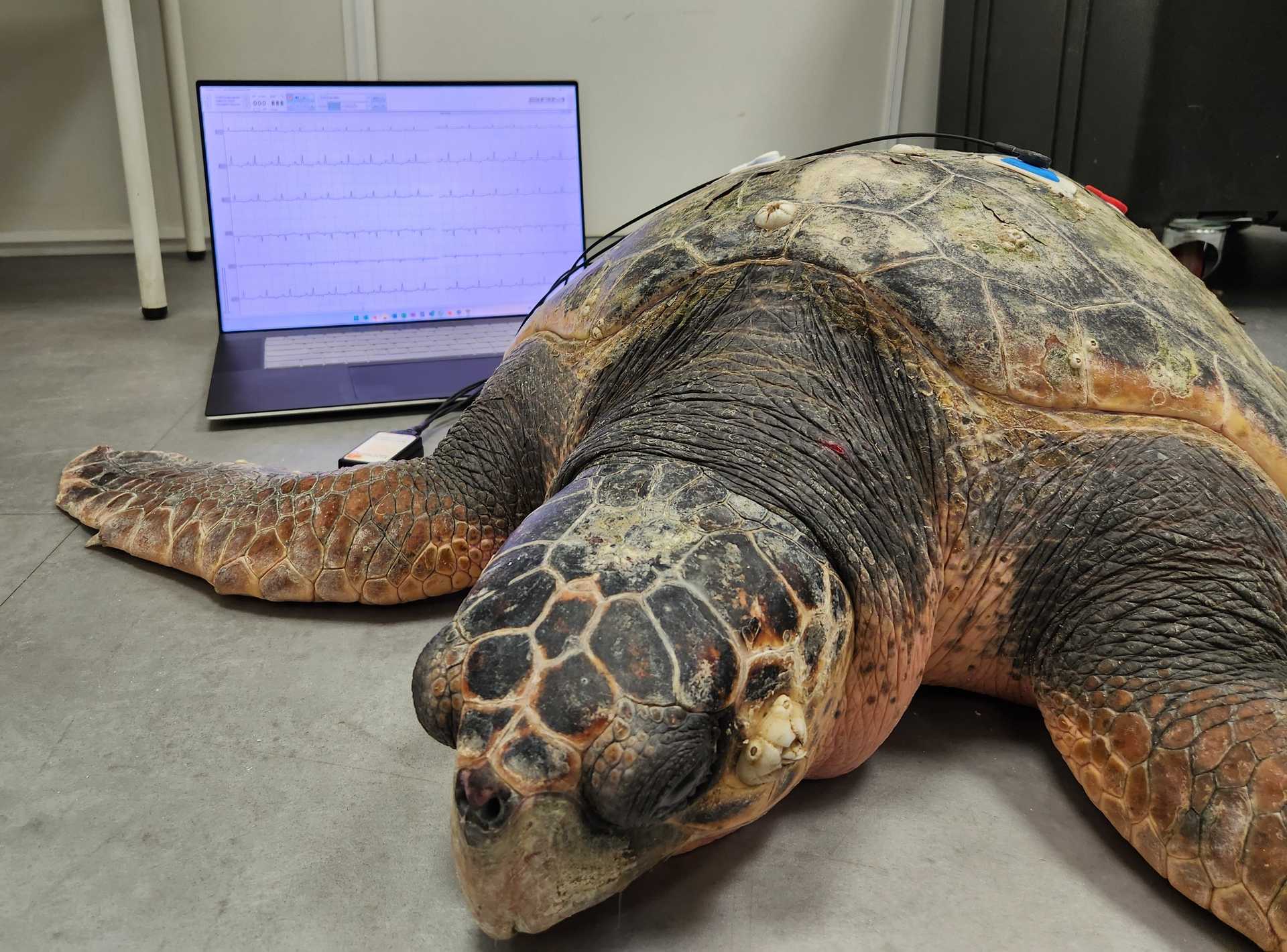
OVC Research Spotlight: Helping Sea Turtles with Decompression Sickness
August 19, 2024
When fish are caught from the ocean, sea turtles can accidentally become caught in the fishing gear. They are pulled quickly to the surface, which can lead to air bubbles forming in the turtle’s bloodstream and tissue.
Often referred to as “the bends” in human scuba divers, decompression sickness can lead to organ damage and death for both humans and turtles. Past work determined that turtles who unfortunately succumbed to decompression sickness had evidence of injury to the heart on postmortem examination; however, little is known about their cardiac condition and function while they are still alive.
This is why Ontario Veterinary College (OVC) researchers are collaborating with international marine rehabilitation experts to explore how decompression sickness affects turtles' hearts. This is traditionally a challenge to assess because conventional diagnostic tools cannot get past or see through their thick shells.

Led by Dr. James Yan, a Doctor of Veterinary Science student in OVC’s Department of Clinical Studies and overseen by Dr. Shari Raheb and Dr. Sonja Fonfara in OVC’s Cardiology Service, this project will evaluate the use of diagnostic tools to assess cardiac health in turtles. This includes echocardiography (a type of ultrasound for the heart), electrocardiography or ECG (a map of the electrical signals in the heart), and markers in the blood that have been associated with heart health.
This past summer, Yan travelled to Valencia, Spain to work with Oceanogràfic and the Oceanogràfic Foundation, who rehabilitate sea turtles suffering from decompression sickness.
Yan worked specifically with Loggerheads, a species of sea turtle, at the aquarium’s rehabilitation center. Loggerheads are classified as a vulnerable species and are a fundamental component of marine ecosystems, as they help to maintain coral reef and sea grass bed health. By-catch is a big issue for loggerhead sea turtles because their natural behaviour brings them into regular contact with fisheries.
Once a loggerhead had been accidentally caught as bycatch, the aquarium had them brought in for rehabilitation. Yan assessed each loggerhead using echocardiography, ECG and heart-specific blood markers to identify evidence of cardiac injury or impaired heart function.
Then, sea turtles were treated for decompression sickness by removing the air bubbles from their blood and tissues using same method that is utilized for the bends in humans: turtles were placed in a hyperbaric oxygen chamber (a pressurized chamber filled with pure oxygen) overnight. Yan then reassessed each sea turtle the next day.

Once the air bubbles had been removed from their blood and tissues, the turtles entered rehabilitation in shallow, small pools. Yan performed weekly cardiac assessments to monitor changes throughout their rehabilitation. Once deemed healthy by the rehabilitation centre, the turtles were released back to the ocean.
“We hope that our results will help to identify additional parameters that could be assessed in turtles with decompression sickness,” Yan says. “This could help rehabilitators to identify turtles that are more severely affected and may require more extensive or longer rehabilitation.”
Another outcome of their research is to address the current knowledge gap in echocardiography, ECG and cardiac blood parameter use in sea turtles.
“We aim to develop guidelines and standardized protocols for these diagnostics for sea turtles in general. Over our first data collection period in 2024, we established standardized protocols for echocardiographic and electrocardiographic examinations in sea turtles and these methodologies are being prepared for future publication.”

Now in the stage of data analysis, the research team hopes to identify which of the diagnostic methods could be used throughout the rehabilitation period. Those that are identified to have been useful will be focused on during their upcoming data collection period in 2025.
Yan adds, "We would like to thank all our collaborators on this project: Dr. Daniel García Párraga, Director of Zoological Operations at Avanqua Oceanogràfic S.L., Dr. José Luis Crespo Picazo, Head of Conservation at the Oceanogràfic Foundation, Dr. Emma Plá González, veterinarian at the Oceanogràfic Foundation and Dr. Domingo Casamián Sorrosal, Head of Service for Cardiology, Respiratory and Interventional Cardiology at Universidad Católica de Valencia.”
This project would not have been possible without funding generously provided by the Ontario Veterinary College Cardiology Service.
.png)